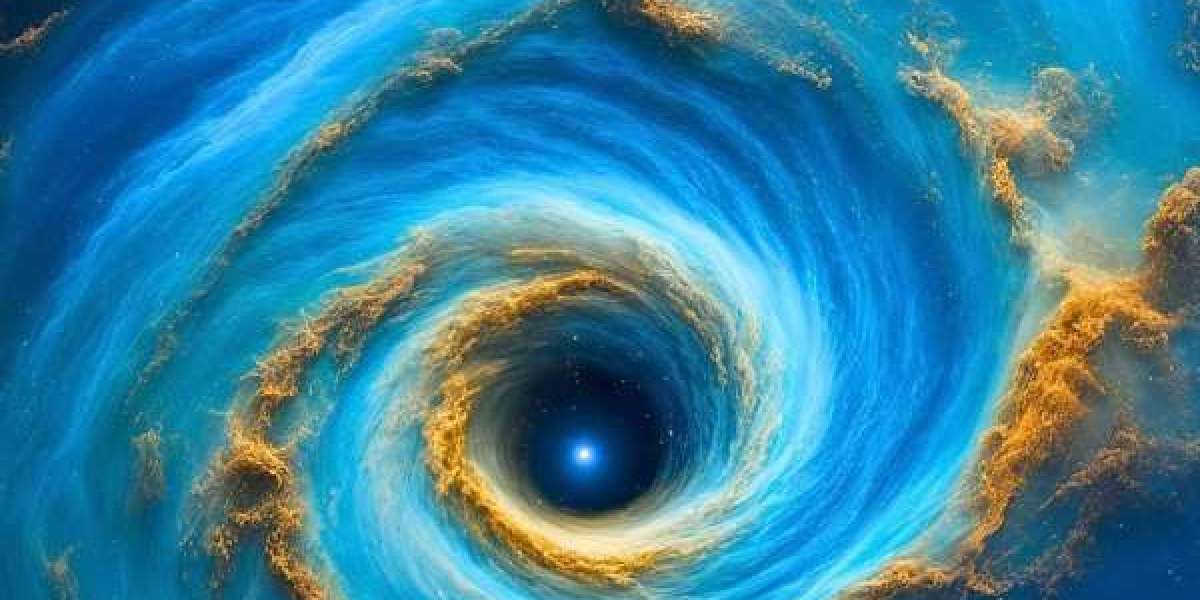Introduction: A Splash Across the Cosmos
When we think about water, we imagine oceans, rivers, or even the icy comets floating through our solar system. But water is not unique to Earth. In fact, astronomers have discovered the largest known water reservoir in the universe — and it’s not in our backyard. It’s an astonishing 12 billion light-years away, surrounding a quasar called APM 08279+5255.
This discovery not only stretches our imagination but also challenges our understanding of how water — and by extension, the ingredients for life — existed in the early universe.
---
The Cosmic Giant: APM 08279+5255
At the center of this story lies APM 08279+5255, a quasar so luminous that it radiates the power of a trillion Suns. At its core is a supermassive black hole, weighing in at about 20 billion times the mass of our Sun.
Around this black hole lies a massive disk of gas and dust — and within that disk, astronomers detected an enormous cloud of water vapor. To put it in perspective, this cloud contains 140 trillion times more water than all the oceans on Earth combined. It’s an amount so vast that our planet seems like a drop in comparison.
---
Why This Discovery is Mind-Blowing
1. Ancient Water
This quasar existed when the universe was only 1.6 billion years old. That means water was abundant long before Earth was even formed.
2. Extreme Conditions
The water is not liquid like what fills our oceans. Instead, it exists as vapor, heated to hundreds of degrees Kelvin, spread across hundreds of light-years.
3. A Cosmic Building Block
Since water is essential for life as we know it, finding it in such massive quantities this early in the universe’s history suggests that the basic ingredients for life were widespread.
---
The Science Behind the Discovery
This discovery was made possible through the efforts of two teams of astronomers working with powerful telescopes:
The WM Keck Observatory in Hawaii
The Caltech Submillimeter Observatory in California
They studied the quasar’s light, looking for spectral fingerprints of water molecules. Water absorbs specific wavelengths of light, allowing scientists to detect it even across billions of light-years.
The results revealed an immense cloud of water vapor — one of the earliest and largest reservoirs of water ever found.
---
What Does This Mean for Life in the Universe?
While the water around APM 08279+5255 is far too hot and spread out to host life directly, its existence suggests that the universe was chemically rich very early on.
It means the building blocks for life — like water — were available long before Earth’s oceans formed.
It supports the idea that water is not rare or Earth-specific, but a cosmic ingredient woven into the universe.
It hints that other planets and systems, even in the early universe, may have had access to water — and possibly, conditions for life.
---
A Cosmic Perspective
Think about it: Earth’s oceans hold about 1.4 billion cubic kilometers of water. Now multiply that by 140 trillion. That’s the scale of water vapor surrounding just one quasar!
This discovery also reframes our perspective on Earth. While our planet feels abundant with rivers, seas, and rain, in the grand cosmic scale, Earth is just a tiny oasis in a universe overflowing with possibilities.
---
The Poetry of the Discovery
There’s something almost poetic in the idea that water — the substance that sustains every living being on Earth — is not confined to our blue planet. Instead, it’s woven into the fabric of the cosmos itself, flowing in unimaginable quantities even when the universe was young.
It makes you wonder: if water was there, what else might have been? And how many worlds, long gone or still hidden, may have cradled life in its embrace?
---
Frequently Asked Questions (FAQ)
Q1: What exactly is a quasar?
A quasar is a super-bright object powered by a supermassive black hole at its center. As the black hole consumes gas and dust, it emits massive amounts of energy, making quasars some of the most luminous objects in the universe.
Q2: How do astronomers detect water so far away?
They look for spectral signatures. Water molecules absorb specific wavelengths of light. By studying the light from distant objects, astronomers can identify the “fingerprints” of water.
Q3: Is the water liquid like on Earth?
No, it’s mostly in the form of vapor, spread out over hundreds of light-years. The temperatures and pressures around quasars make liquid water impossible.
Q4: Could life exist in that water cloud?
Not directly. The environment is too extreme. But its presence shows that life’s key ingredient was available very early in the universe.
Q5: Why is this discovery important?
It proves that water — essential for life — was widespread in the early cosmos, reshaping our understanding of the universe’s chemical evolution.
---
Conclusion: A Universe Awash with Water
The discovery of a water reservoir 12 billion light-years away is more than just an astronomical record. It’s a reminder that the universe is not barren but full of the essential elements for life.
From oceans on Earth to vapor clouds around black holes, water connects us to the cosmos in a profound way. It tells us that we are not isolated but part of a vast, interconnected universe where the ingredients for life are scattered like stardust.
So the next time you take a sip of water, remember — that humble liquid has a cosmic story, written across billions of years and light-years.
Sources:
Astronomers Find Largest, Most Distant Reservoir of Water — JPL / NASA news release
Caltech-Led Astronomers Discover the Largest and Most Distant Reservoir of Water Yet — Caltech News







